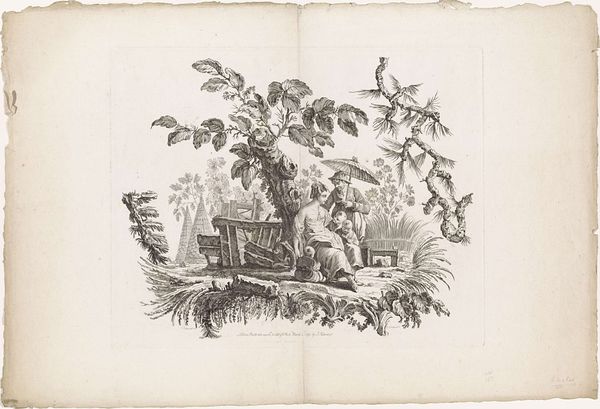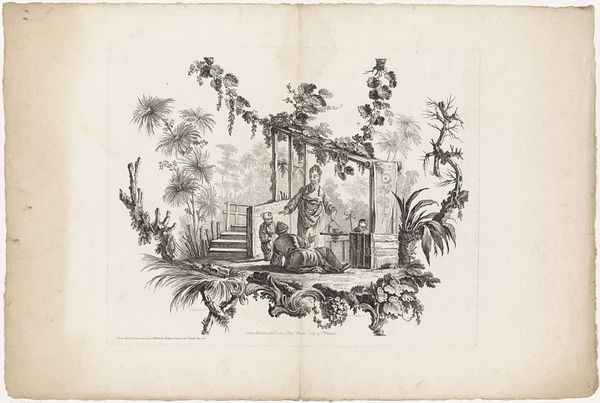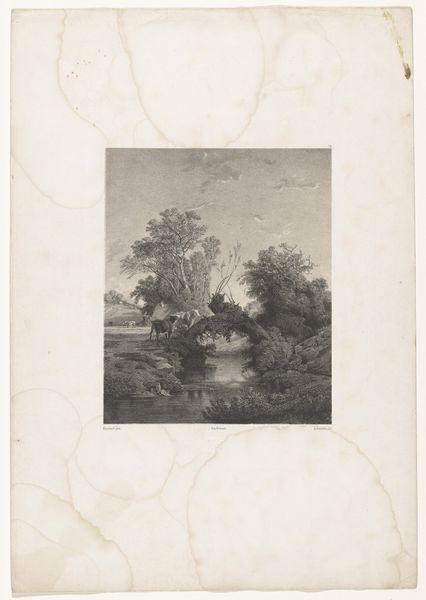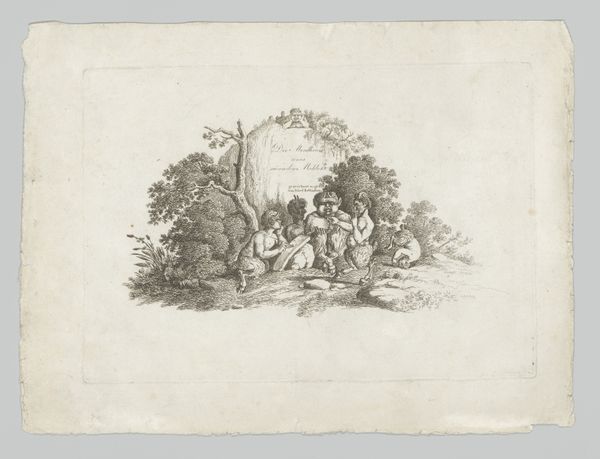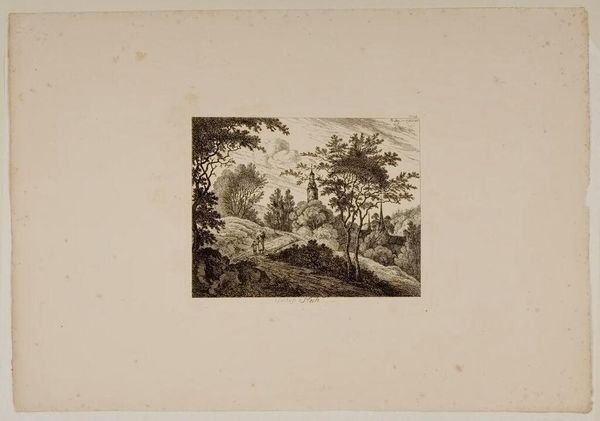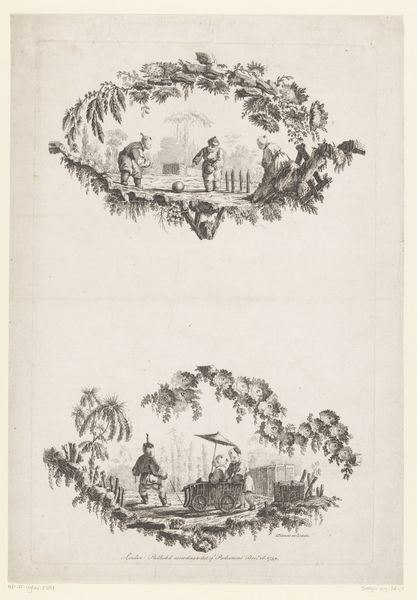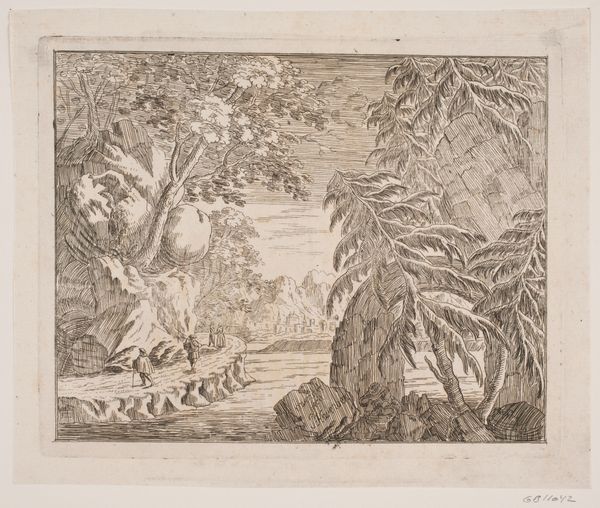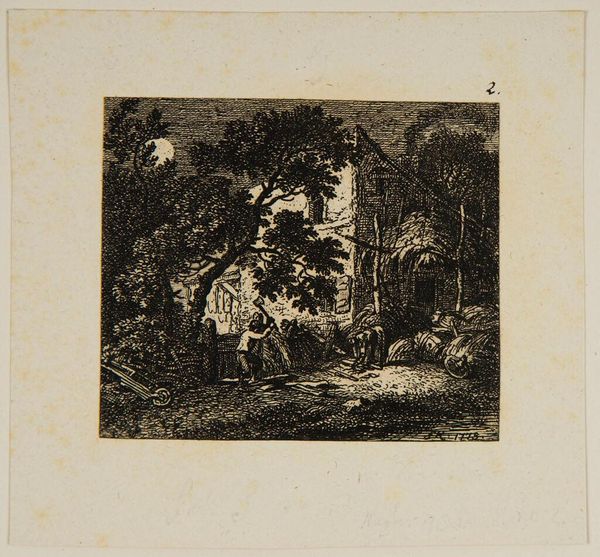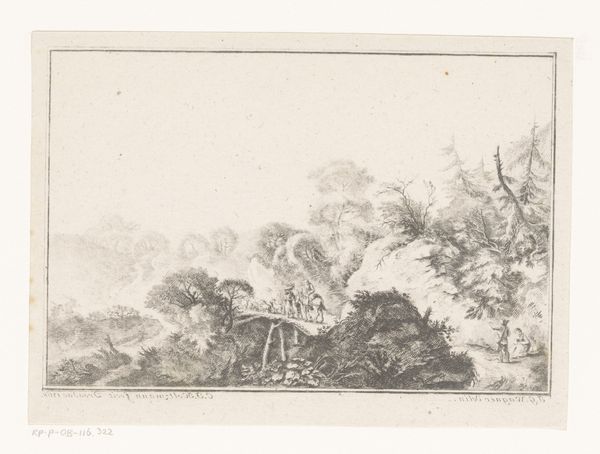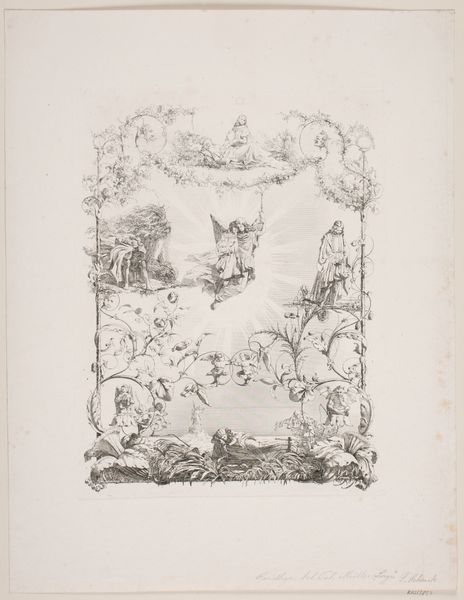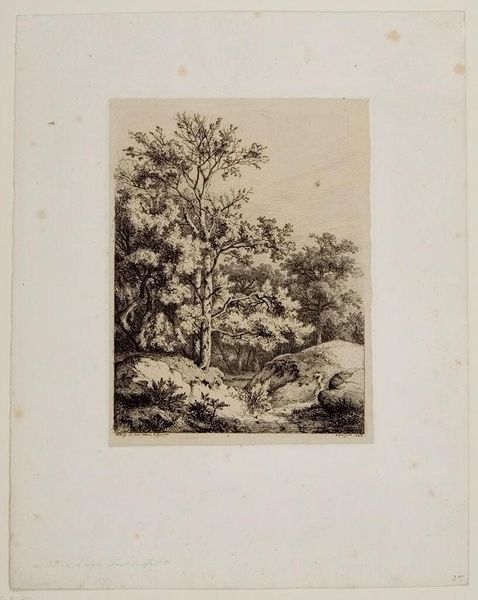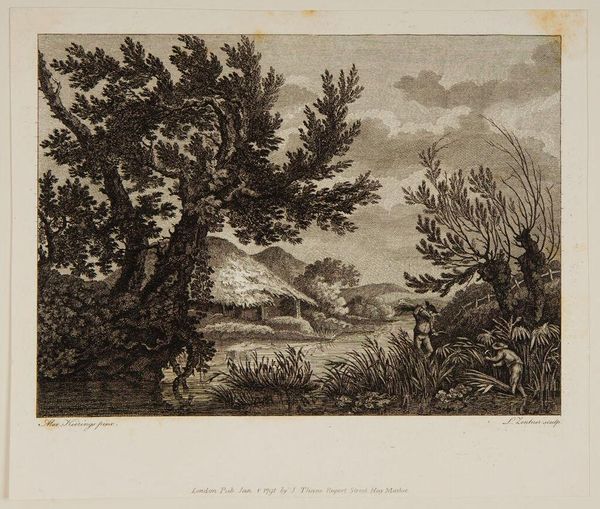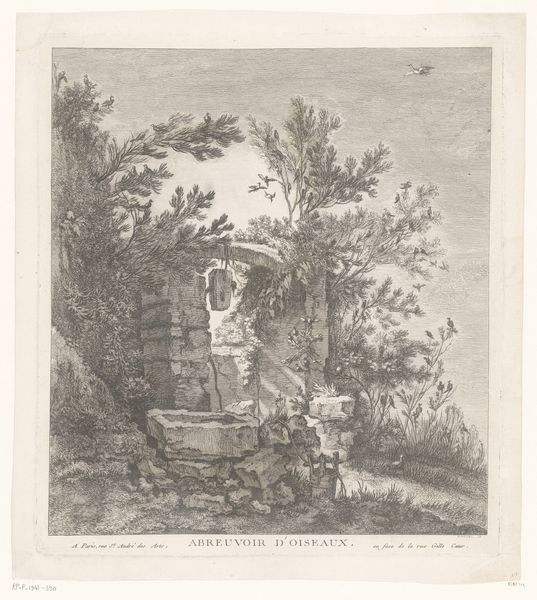
drawing, ink, pen
#
drawing
#
ink drawing
#
pen drawing
#
pen sketch
#
asian-art
#
landscape
#
figuration
#
ink
#
pen
#
genre-painting
#
rococo
Dimensions: height 436 mm, width 546 mm
Copyright: Rijks Museum: Open Domain
Curator: It’s interesting how delicately Aveline rendered this scene. There’s an almost dreamlike quality. Editor: Indeed. Let’s provide some context. This pen and ink drawing, created in 1759 by François Antoine Aveline, is titled "Chinees gezin met muziekinstrument, omringd door begroeiing", or "Chinese family with musical instrument, surrounded by vegetation". Curator: "Chinese"? Given Aveline’s access, what makes you so certain this drawing truly represents Chinese people or Chinese customs? It seems closer to Rococo fantasies of the orient. Editor: A fair point. The imagery aligns with the vogue for chinoiserie that swept through Europe in the 18th century. Consider the labour involved—European artisans striving to emulate the aesthetic of a culture they only understood through trade and fanciful depictions. How much artistic license are we seeing versus a real ethnographic portrayal? Curator: Exactly! The social context of its production is vital. Aristocratic collectors desired these scenes; they fueled the market. The material reality of ink on paper, though simple, represents a complex web of cultural appropriation and exoticism as commodity. Editor: Yes, the drawing offers a glimpse into the European fascination with the "Orient," filtered through a very specific lens. Notice the setting: a fabricated, theatrical landscape, more stage than nature. The cultural elite was invited into a seductive, if somewhat artificial, idea of "the Other". Curator: And note the details - are these handcrafted instruments really reflecting the labor of musical artisans? Or an elite’s commodification of artistic process in other cultures? Editor: Looking at how institutions acquired and displayed these pieces tells its own story about how cultural narratives are curated and promoted. What was this originally commissioned for? Was it displayed privately, fueling the imagination of a select audience? Or was it intended for public consumption, shaping broader perceptions of Asian cultures? Curator: This detailed ink work forces us to look critically not only at its production but its purpose, highlighting the artifice inherent in these depictions. Editor: Absolutely. The beauty here serves as a constant reminder to examine the forces shaping both the creation and the reception of this kind of art. Curator: Right. By addressing those complex relationships and materiality we get closer to truth.
Comments
No comments
Be the first to comment and join the conversation on the ultimate creative platform.
